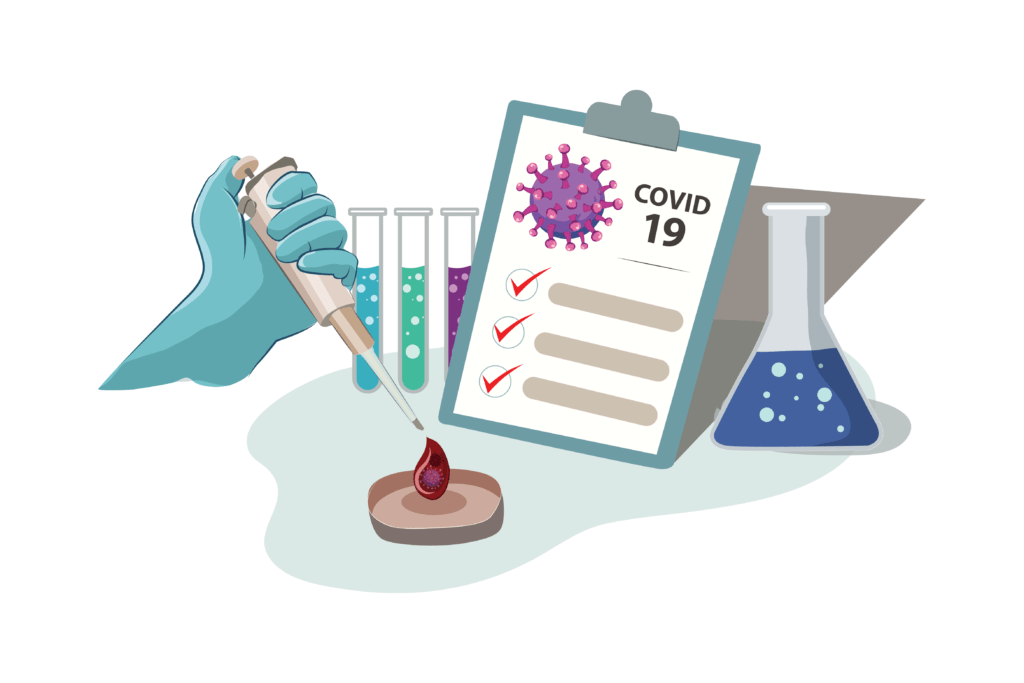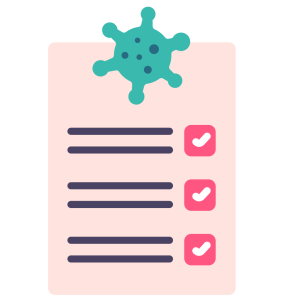California COVID-19 Resources
Overview
This information supplements the COVID-19 Safe Workplace Training. Please review the information below and then return to the course tab.
Federal Guidance Supplement
Identification and Evaluation of COVID-19 Hazards

All employees may participate in the identification and evaluation of COVID-19 hazards in the workplace.
Please contact Human Resources to report any COVID-19 workplace safety or other concerns.
Face Coverings
General
In California, all employees must comply with CDPH guidance regarding the use of face coverings. Face coverings are strongly recommended in indoor public places.
Employer Obligations
Employers must provide face coverings to employees and ensure they are clean and undamaged.
Employees may wear a face covering even if not required by applicable law, unless it would create a safety hazard, such as interfering with the safe operation of equipment.
All employees may request a face covering from their employer at no cost and wear them at work, regardless of vaccination status, without fear of retaliation.

Respirators
COVID-19 is an airborne disease. Respirators protect the user from airborne disease while face coverings primarily protect people around the user.
Employers may be required to supply an N-95, upon employee request and at no cost to the employee, if required by state law (for example, in California) or as a reasonable accommodation under the ADA or comparable state law. An employer may not retaliate against any employee for requesting or using an N-95.
If you request to voluntarily wear a respirator at work, your employer will educate you on:
how to properly wear the respirator provided; and
how to perform a seal check according to the manufacturer’s instructions each time a respirator is worn (facial hair interferes with a seal).
All employees must wear a face covering when required by law or workplace policy. Please refer to your employer’s face covering policy.
Definitions
Employers may be able to revise their COVID-19 protocols now that the California Department of Public Health (CDPH) has updated the definition of “close contact” for isolation and quarantine purposes. Over the summer the CDPH changed the “close contact” definition to mean anyone “sharing the same indoor airspace” with a person who is infected with COVID-19 for a cumulative total of 15 minutes or more over a 24-hour period. The most recent update, which took effect on October 14, 2022, now applies an updated “close contact” definition for some California employers depending on the size of their workplace.
“Close contact” is now defined as follows:
For indoor spaces of 400,000 or fewer cubic feet per floor — such as a home, clinic waiting room, or airplane — a close contact is defined as sharing the same indoor airspace for a cumulative total of 15 minutes or more over a 24-hour period (for example, three separate 5-minute exposures for a total of 15 minutes) while a person s infected (confirmed by a COVID-19 test or clinical diagnosis).
For large indoor spaces greater than 400,000 cubic feet per floor (such as open-floor-plan offices, warehouses, large retail stores, manufacturing plants, or food processing facilities), a close contact is defined as being within six feet of the infected person for a cumulative total of 15 minutes or more over a 24-hour period during the infected person’s infectious period.
The update may change the process for identifying close contacts in your workplace, which impacts testing, masking, and outbreak procedures under Cal/OSHA’s Emergency Temporary Standard (ETS). For employers with a workspace of 400,000 cubic feet or less, everyone in that space is considered a close contact if a person with COVID-19 spends 15 minutes there. Alternatively, for employers with workplaces larger than 400,000 cubic feet, the old six feet/15-minute standard can be used to identify close contacts.
Local Requirements
The State of California provides a list of county and city COVID-19 mandates and recommendations, such as face mask requirements and vaccination or testing sites.
* County and City COVID-19 safe workplace requirements are generally not reported in State Resources. This website is provided as a courtesy and may not contain the most up-to-date information.
COVID-19 Testing
Employer Obligations
Your employer will offer testing at no cost to employees during paid work time to:
- Symptomatic employees, regardless of vaccination status and regardless of whether there is a known exposure.
- All employees regardless of vaccination status, who have had close contact with a COVID-19 case, except for recently recovered employees.
- All employees except for recently recovered employees and employees who were not at work during the relevant period, regardless of vaccination status, in an outbreak or a major outbreak.
- During an outbreak, all close contacts must either be tested or excluded from the workplace until the return to work requirements for COVID-19 cases are met. During a major outbreak, all employees must either be tested or excluded until these return to work requirements are met.
- When following CDPH’s Isolation and Quarantine Guidance to keep employees working or return them sooner, if tested.
Definitions
Close contact means someone sharing the same indoor airspace, e.g., home, clinic waiting room, airplane etc., for a cumulative total of 15 minutes or more over a 24-hour period (for example, three individual 5-minute exposures for a total of 15 minutes) during an infected person’s (laboratory-confirmed or a clinical diagnosis) infectious period.
An outbreak occurs when three or more employee COVID-19 cases visited the workplace at any time during a 14-day period.
A major outbreak occurs when 20 or more employee COVID-19 cases visited the
workplace within a 30-day period.

Please refer to your employer’s policy to access COVID-19 testing at the workplace.
California provides information on where to find free COVID-19 testing.
Leave Benefits
Paid Leave Benefits Required by Law
Workers may be eligible to receive paid leave benefits required by law for COVID-19-related reasons, including:
Leave required by local law, if applicable, including but not limited to:
Employer Leave Policies
You may also be eligible for leave (paid or unpaid) provided by employer policy or contract for COVID-19-related reasons, when applicable.
Please refer to your employer’s policies for information on applicable leave benefits.

Workers’ Compensation Benefits
Employees who contract COVID-19 may be eligible for workers’ compensation benefits if certain specified criteria are met. More information about workers’ compensation benefits and the presumption of work-relatedness of COVID-19 is available at the California Department of Industrial Relations, Division of Workers’ Compensation.
COVID-19 Plan & Policies
Your employer will provide employees with additional education on the COVID-19 Prevention Program and related COVID-19 policies applicable to your workplace.
Governor Newsome announced State of Emergency due to COVID will end February 28, 2023. However, California’s SMARTER Plan will continue to guide strategies to protect communities and quickly respond to outbreaks. (October 17, 2022)
State Resources
The following resources are available in California if you have any questions or need additional support:
California COVID-19 hotline: 833-422-4255
- California Department of Public Health, Guidance for the Use of Face Coverings (September 20, 2022)
Federal Resources
The following federal resources are available if you have questions or need additional support:
Other Workplace Considerations
Contact your County Health Department for additional information and guidance as local requirements may vary.
Refer to government authorities and your employer’s policies and procedures for any other required COVID-19 workplace and/or job-specific safety measures, including but not limited to health screening, face coverings, social distancing, and cleaning and disinfecting protocols.
Workplace safety requirements and guidelines continue to develop as more information about COVID-19 is discovered.